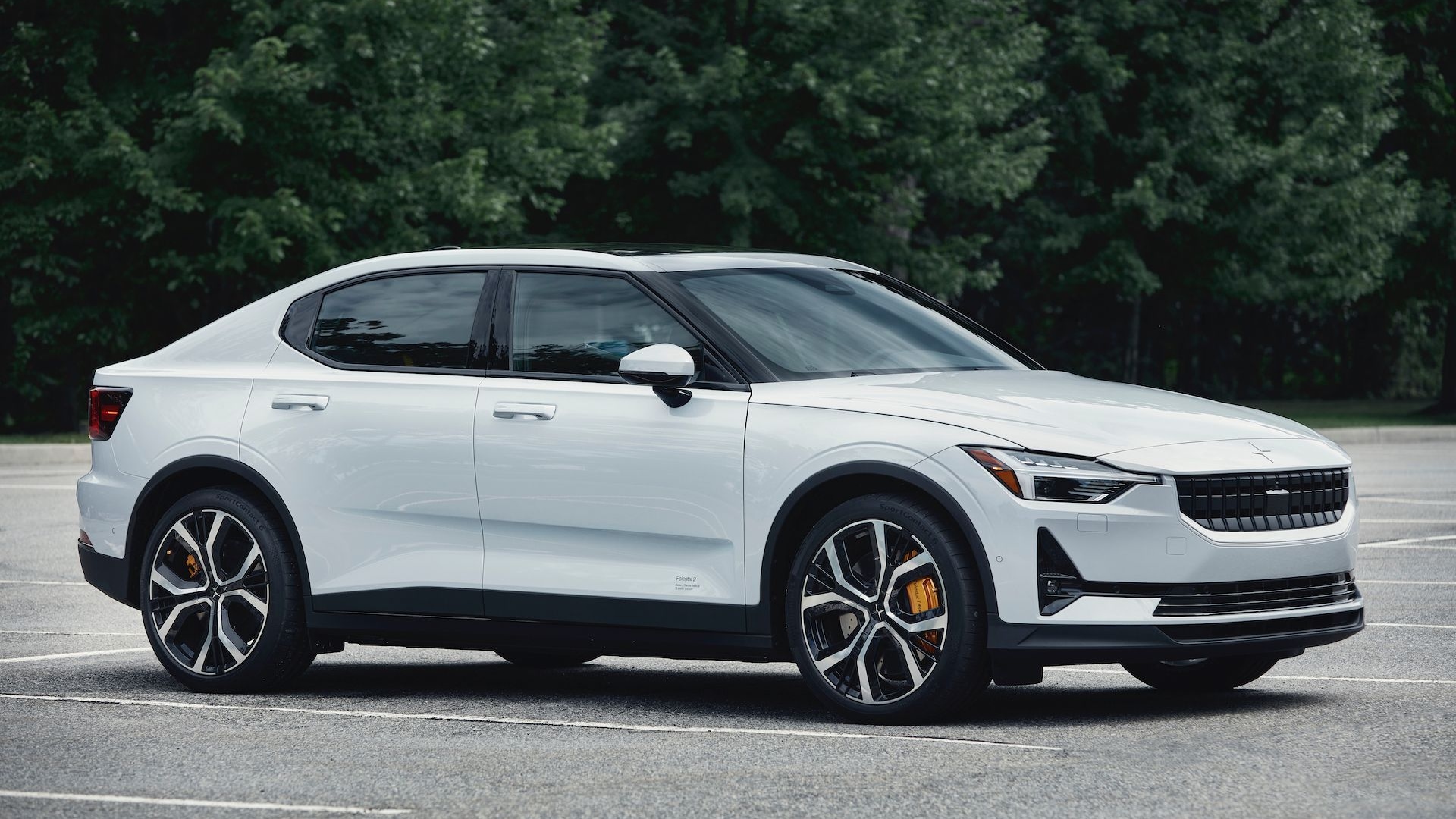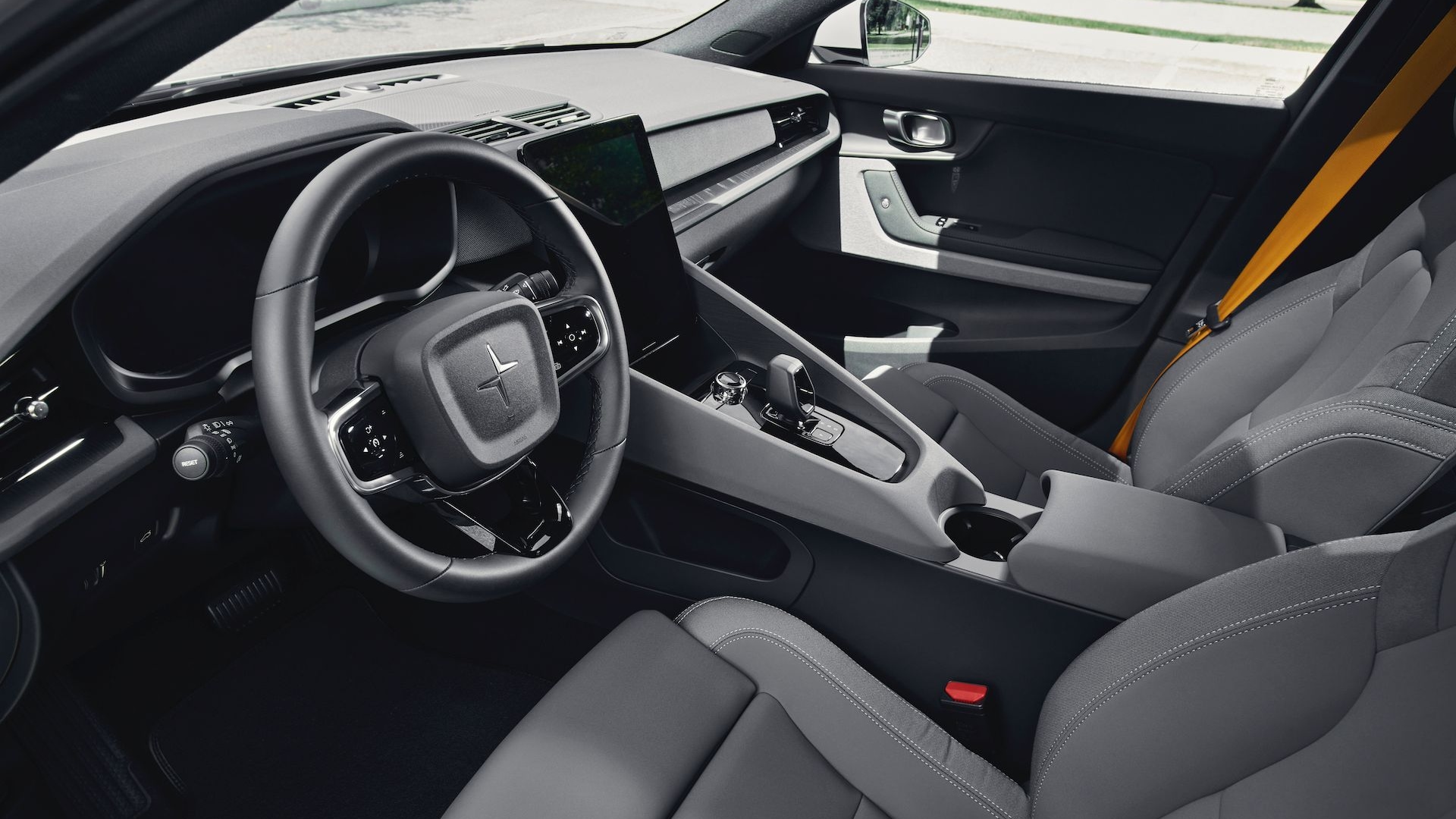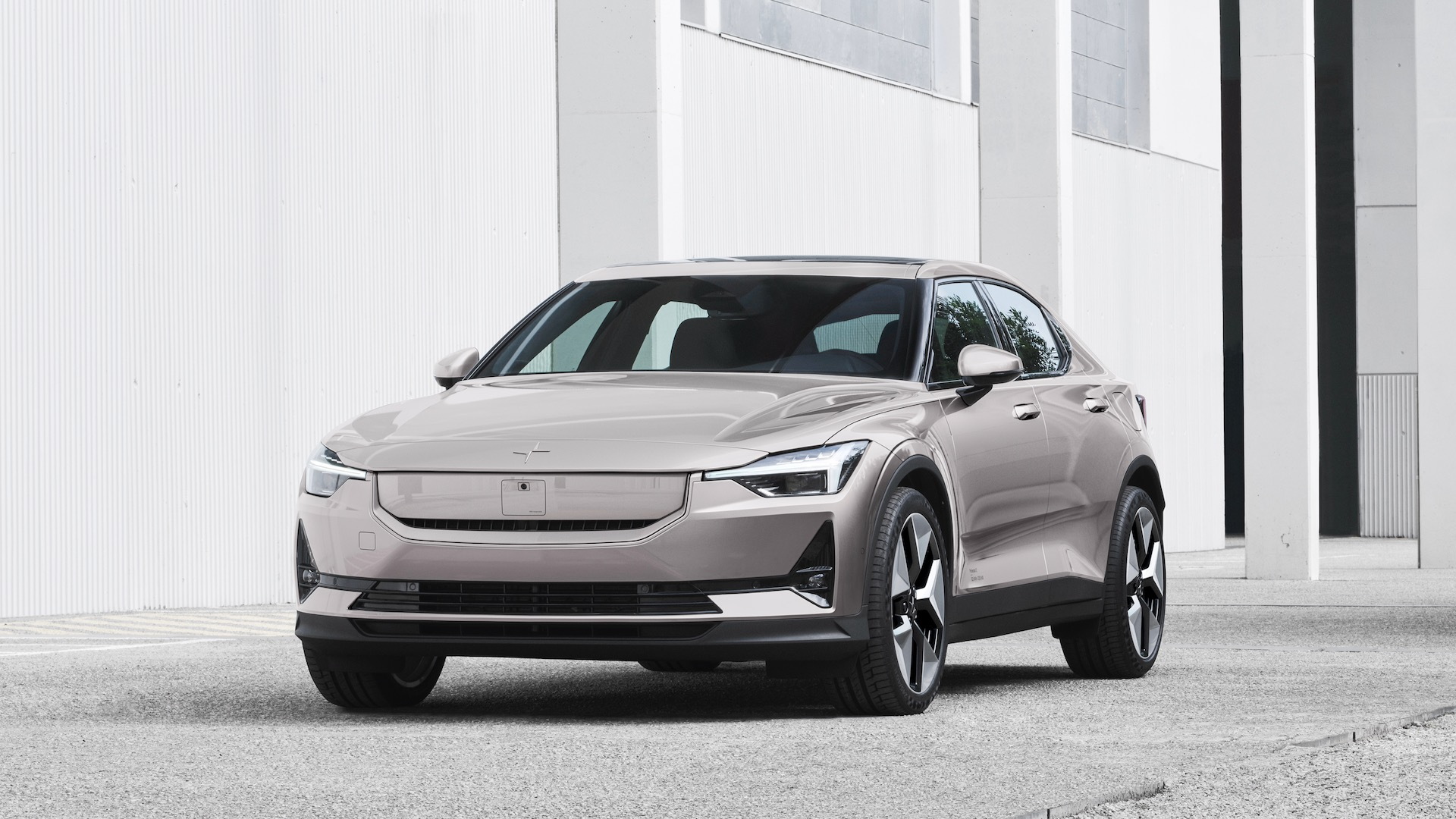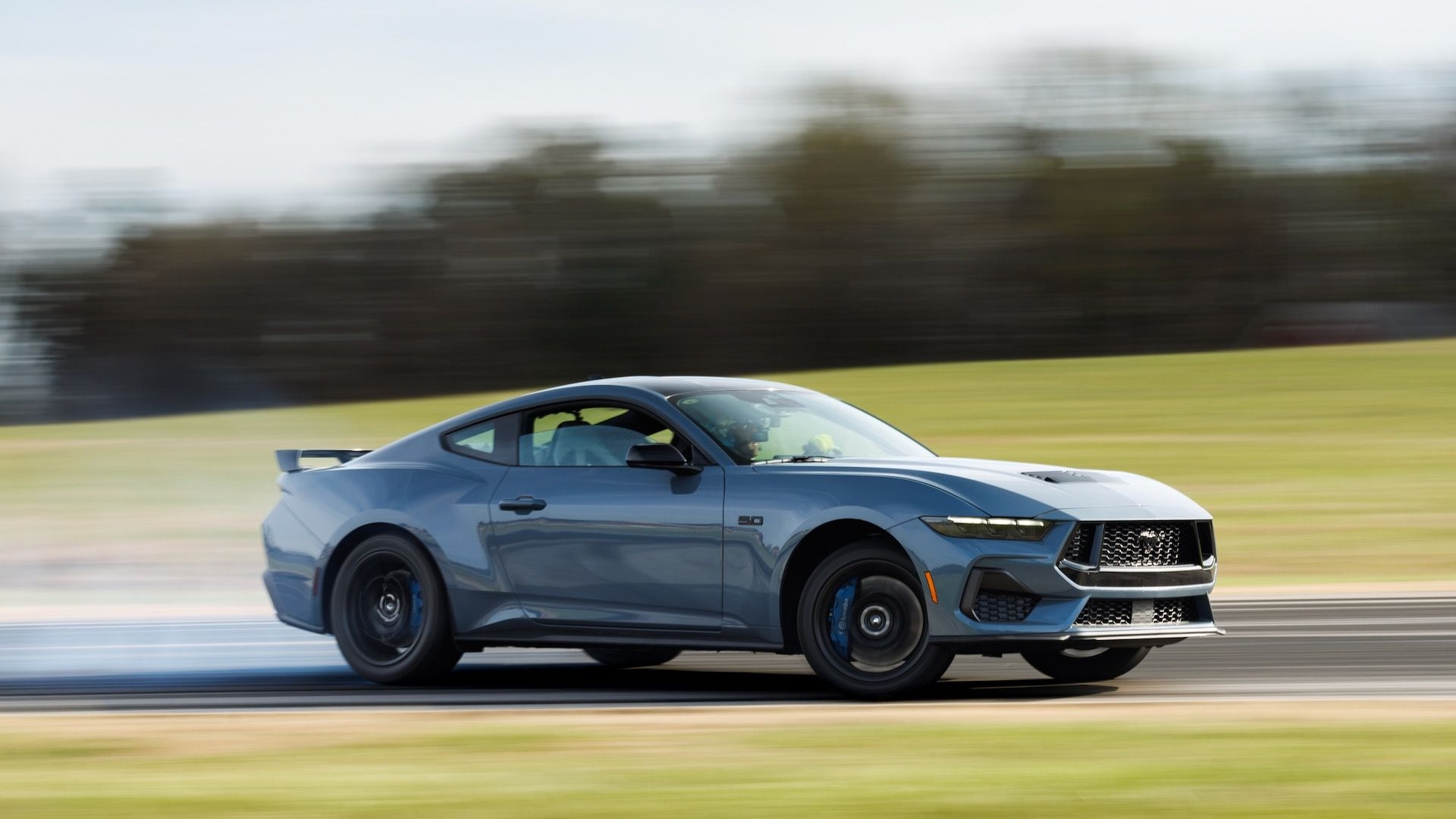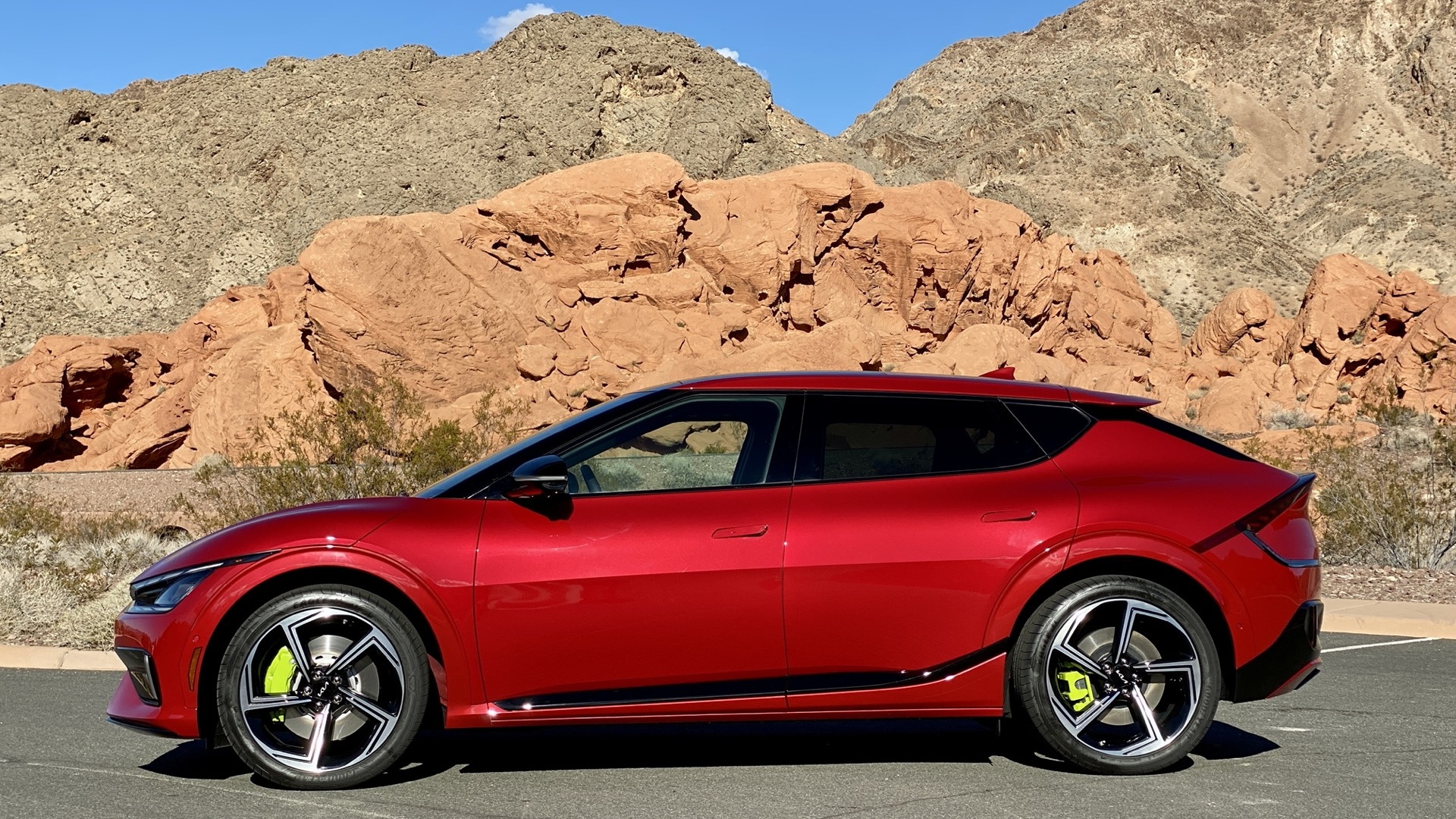From behind the wheel of the 2021 Polestar 2 it’s easy to see that this car is different. It’s a $60,000 luxury car, but the materials look like nothing from Audi or a Mercedes-Benz, or even from sister-brand Volvo. The Polestar 2 is a sport sedan, but it has a suspension you won’t see outside of a tuner car. And it has 408 horsepower, but its electric motors don’t deliver power anything like a BMW M3.
The 2021 Polestar 2 and Polestar itself are about sustainability, power, performance, and style, all filtered through a prism of electric propulsion. I traveled to Michigan to drive Polestar’s first electric vehicle to see if it’s different in the right way.

2021 Polestar 2

2021 Polestar 2
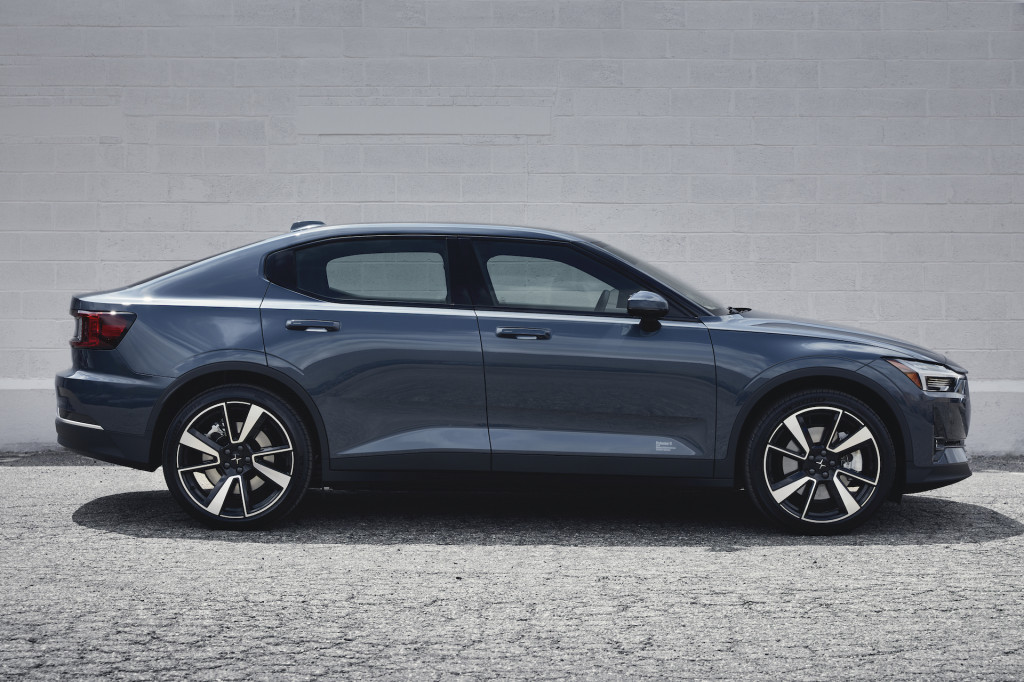
2021 Polestar 2
Electric is electric
A jab of the throttle shows the Polestar 2 fastback sedan offers a different kind of power than most performance cars, though it’s not new to the industry.
EV performance doesn’t require overhead cams, turbochargers, or variable valve timing to make power. It simply requires powerful electric motors that can draw power quickly from a battery pack. This car has two of them. They’re identical permanent magnet motors—one up front, one out back—that each make 204 horsepower and 243.4 pound-feet of torque and give the car all-wheel drive. The power doesn’t build like it does with a gasoline engine. I can tap into the combined 408 hp and 487 lb-ft of torque instantly to smoothly and nearly silently rocket the car forward. It hits 60 mph in just 4.45 seconds and provides plenty of punch to make highway passing a breeze.
Other EVs have this kind of power. The Tesla Model Y I recently drove is just as quick or quicker. It’s a happy perk of electric efficiency.
The Polestar 2 also offers one-pedal driving like the Model Y. I can choose from Off, Low, and Standard one-pedal driving modes. Standard is the most aggressive and the suggested mode to make the car more efficient by capturing the most energy through brake regeneration. It also makes the Polestar 2 feel like I’m hitting the brake every time I let off the throttle. In this mode, I barely ever need to use the friction brakes to bring the car to a stop at suburban stop lights on my drive from Ypsilanti to Hell and back. Polestar even provides a little graph in the instrument cluster that shows when both regenerative and friction braking come into play.

2021 Polestar 2

2021 Polestar 2

2021 Polestar 2
Tuner car handling
Polestar offers three other ways to adjust the 2’s dynamics. Two are modes for the stability control and steering that are common in any car these days. The third adjustment is the stuff of race cars and tuner cars.
The ESC Sport setting loosens the stability-control leash on the rear wheels without intervening, while the steering has Light, Standard, and Firm settings.
During my drive on suburban and lake country Michigan roads I settle on Standard as my preferred setting. It strikes the best balance of effort and on-center stability. The Light setting lacks some of that stability, while Firm has plenty of stability but feels artificially heavy. Standard is just right, and none of the settings change the directness of the 15.8:1 steering ratio.
The Polestar 2 I’m driving is a Launch Edition model with the optional $5,000 Performance Pack that firms up the spring rates and stabilizer bars, lowers the car by 0.2 inch, upgrades to gold Brembo calipers with cross-drilled brake discs, swaps in summer performance Continental SportContact 6 tires on 20-inch forged alloy wheels, and adds gold seat belts and a black roof panel. It also comes with a party trick: manually adjustable Ohlins dual-flow valve dampers, each with 22 settings.
The settings are located on each damper and must be manually adjusted. Polestar recommends the dealer make those changes.
The car comes from the factory with a mid-firm setup that Polestar calls Nominal. It uses settings of 12 up front (1 is firmest, 22 softest) and 14 in the rear. Polestar’s two other recommended settings are Track, with an 8 setting up front and 10 in the rear, and Comfort, which uses the 18 and 20 settings.
In this default factory setting, the Polestar 2 has sport sedan moves marked by a firm but not harsh ride and little body through turns. The battery weighs 1,100 pounds and contributes to the 4,680-pound curb weight, but it’s set low for an ideal center of gravity and the Polestar 2 has a near-perfect 51/49 front/rear weight balance. The handling is neutral in the few stolen moments I can get in roundabouts and clover leaf on-ramps, and the multiple damper adjustments can tweak the handling for oversteer or understeer by making the rear firmer or softer. The current settings work well for me but some buyers will want to go softer. Few will want to go firmer.

2021 Polestar 2
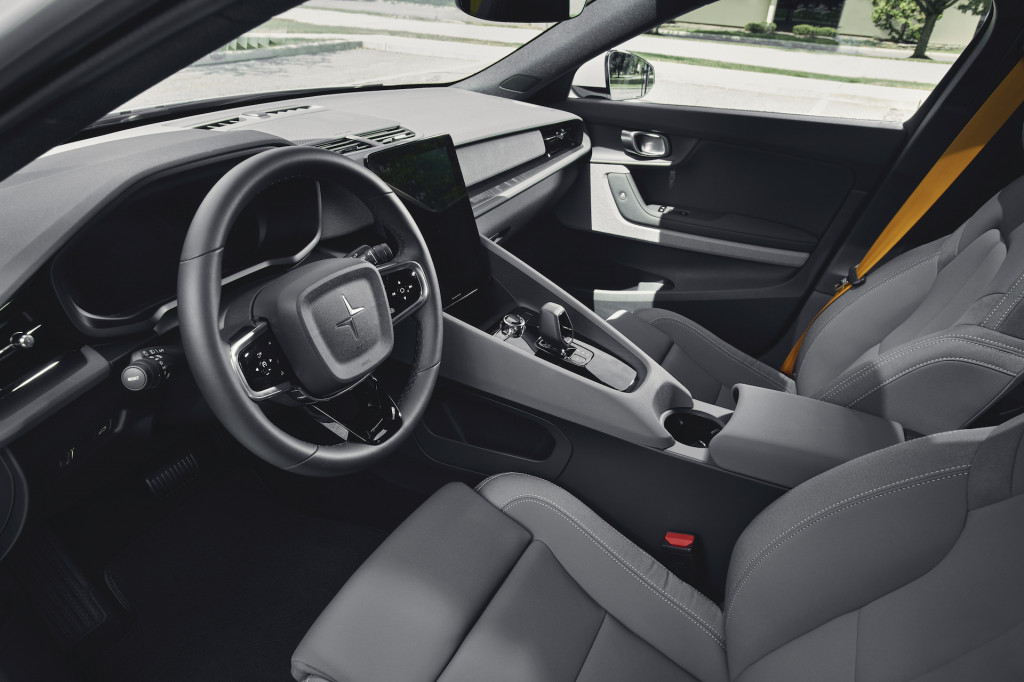
2021 Polestar 2
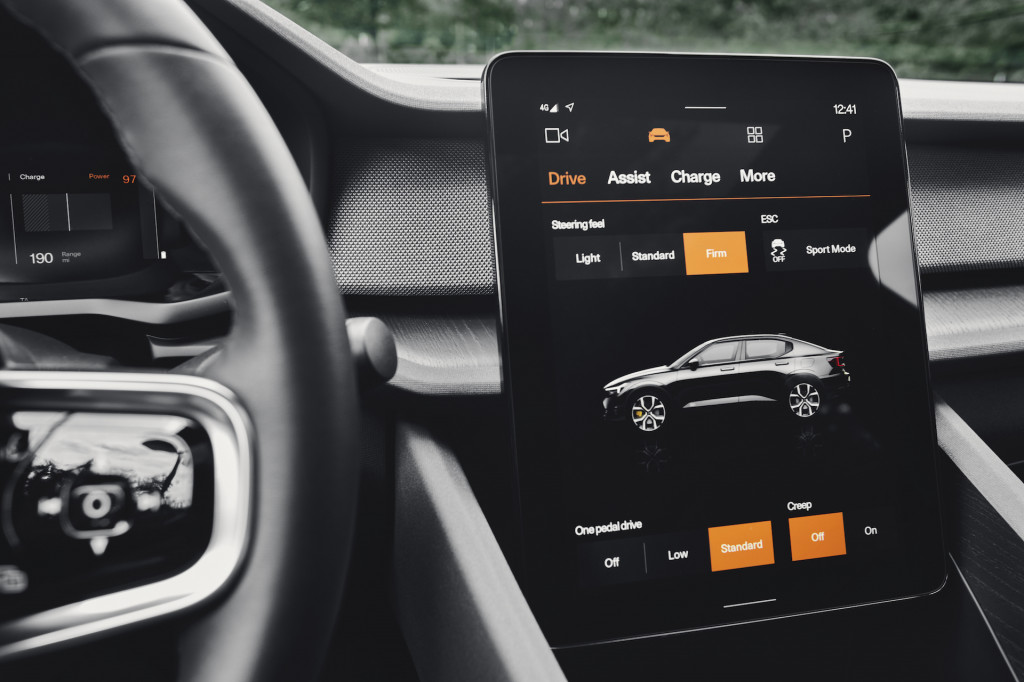
2021 Polestar 2
Green is the new luxury
Inside, the Polestar presents a different kind of luxury. Nothing in this cockpit was derived from animal products—it’s vegan, though leather upholstery is a pricey $4,000 option—and the materials are mostly sustainable. Recycled wood is used for the trim. The seats are upholstered in Polestar’s WeaveTech, which is made largely of recycled materials and has the stretchable feel of a synthetic cloth. The carpets are made from recycled water bottles. Flax- and cork-based materials are also used.
Despite being closer to nature, the look and feel are cold, impersonal, and technical, even for Scandanavian design. I don’t find the Polestar 2’s cabin as appealing as the warm and inviting interiors of luxury rivals. It’s more natural, though, and it could catch on as cool for being green.
The cabin’s look is also similar to a Tesla, but the space is not. Like a Tesla, a large touchscreen sits front and center, though the Polestar 2 also has a digital instrument cluster. The 11.2-inch center screen runs on an Android platform that makes Google part of the in-car experience. It uses Google Maps, incorporates the Google Play store, and responds to “Hey Google” or “OK Google” voice commands. The system can perform internet-based searches and control in-car systems such as climate control. You can even sign into personal Google accounts.
This is the first vehicle on the market with the Android Automotive user interface, and it’s a preview of things to come from other brands.
So far, mostly good. I detect no lag time in the screen’s reactions and the screen layout is simple if not overly attractive, with large icons that are easy to access. It’s convenient to have internet-based searches on board, and most of us will be familiar with several of the apps that can be used.
However, I run into a couple of issues. I can’t pair my phone to use Apple CarPlay because it’s not available yet, though it will be soon. The system also doesn’t have native AM or satellite radio. Both will be available as apps, but this car doesn’t have them so I have to make due with local Detroit sports talk and classic rock radio.
I have only a few hours with the Android system, so I’ll reserve a final judgment until I can live with it longer.
Living with the Polestar 2 will be good for passengers but not as good as living with a Tesla. The difference is in the platform. While the Tesla Model 3 and Model Y share an EV-specific skateboard platform, the Polestar 2 uses the CMA platform from the Volvo XC40 crossover. That leaves some residual packaging meant for a vehicle powered by an internal combustion engine.
The CMA platform keeps a vestigial transmission tunnel hump and places the rear seat farther forward than in a Tesla Model 3. The Tesla has plenty of room for passengers of any height, while the Polestar will struggle to fit a 6-footer behind a 6-footer. Thankfully, though, the Polestar’s fastback sedan shape gives it as much as 37.8 cubic feet of cargo space.

2021 Polestar 2
Efficient but not class leading
The EPA has yet to rate the 2021 Polestar 2’s electric range. Its 75-kwh battery pack gives it 291 miles on the European WLTP cycle and Polestar says it expects a range in the mid-200s when testing is completed in September. However, my tester shows 200 miles of range with a 98% charge at the start of the day.
At the end of my drive on a warm 87-degree day, I’ve covered 81.8 miles, used 100 miles of range according to the instrument cluster (though it only falls in 10-mile increments), and reduced the charge level to 55%. The trip computer shows I used 37.8 kwh per 100 miles, which translates to 2.65 miles per kwh. I got 2.91 miles per kwh in a Tesla Model Y, so the Polestar 2 isn’t as efficient, but no EV automaker has matched Tesla efficiency so far. Still, the Polestar 2 is likely more efficient than the EVs from Audi, Jaguar, and Porsche.
The Polestar 2 can charge at speeds up to 150 kw, which shoves in an 80% charge in 40 minutes. A Level 2, 240-volt home charger can charge the battery in 8 hours.
This test car is the decked out Launch Edition model. It’s the only trim level for the first model year and it comes with a hefty sticker price of $61,200. The Performance Pack adds $5,000 and any color other than black adds another $1,200. However, every Polestar 2 qualifies for up to $7,500 in credits from the feds.
In this form, at this price, the Polestar 2 isn’t the deal it will be in the future. Polestar says a model priced as low as $41,000 is in the works, though it will certainly have fewer safety and comfort features.
The Polestar 2 hits squarely on the brand’s core traits of sustainability, power, performance, and style. It’s a different kind of luxury car from a brand that has room to grow. A dedicated EV platform would give future Polestars more space, improved battery technology will help them better compete with Tesla for range, and continued engineering development from a brand that used to be a performance arm will make them more fun to drive. For now, the Polestar 2 is a good first step in that direction.
Polestar provided a day with the Polestar 2 to bring you this firsthand report.
